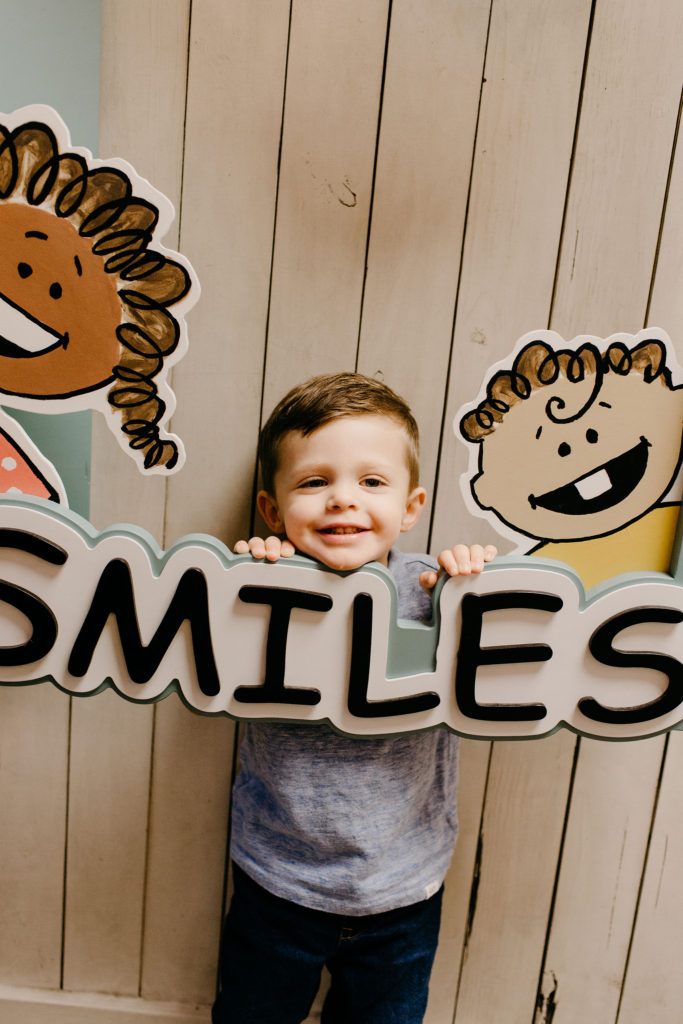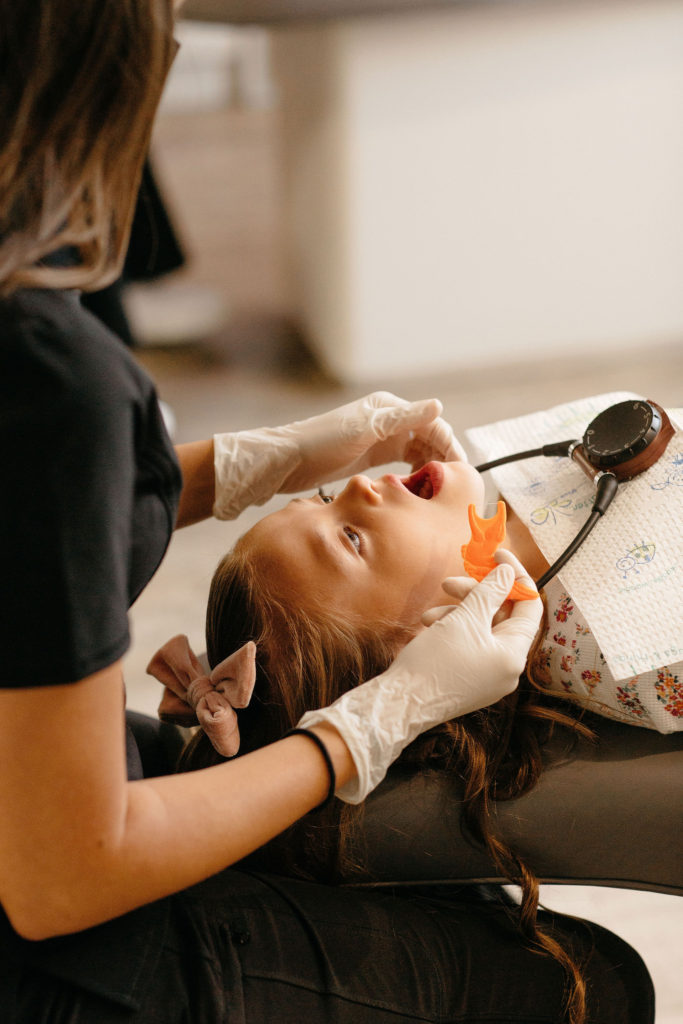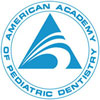Extraction
Extractions for Kids
A fun part of watching your child grow is the right of passage of losing a tooth. Your child noticing a tooth is loose and playing with it and tugging on it and making the tooth loose enough to pull is all a natural part of growth and development. There are times however, when a tooth needs to come out and needs help doing it. Tooth extraction in children can be done safely and painlessly by our pediatric dentists here at South Davis Pediatric Dentistry.

How Long Does It Take to Get a Tooth Pulled?
The length of time it takes for getting a tooth pulled depends a lot on the status of the tooth in question and what type of extraction is required. Pulling baby teeth that are in the front of the mouth is usually a simpler procedure because those front teeth have only a single straight root. Whereas a molar removal could be more involved and therefore take longer because it has more roots.

Will it hurt?
For simple extractions, a local anesthesia is often all that is required for your child to avoid any pain during the procedure. For surgical extractions, we will recommend an in-office sedation by utilizing an oral sedative, nitrous oxide (laughing gas), an IV sedation either conscious or unconscious, or a combination. Our goal is for this process to be painless and non-intimidating.
We will discuss our options for in office sedation with you and your child (when age appropriate). There may be times when, due to your child’s development and age, a local anesthesia may not be enough for even a simple extraction. Be assured that we are experts in pediatric dentistry and have performed over 25,000 in office sedations in our time serving the community. If your child has fears and anxieties about dental care, we take that into consideration as well when discussing what anesthesia or sedation option is most appropriate.
How Long Does It Take for a Tooth Removal to Heal?
Pain should subside in the first day or two following a tooth extraction, but that doesn’t mean your tooth socket is done healing. The blood clot that forms in the socket after the procedure is very important and we want it to stay in place for the healing process. To help facilitate the healing and not disrupt the blood clot, we recommend the following:
- Eat only soft foods the first few days after.
- For at least a week after the procedure please avoid giving your child any hard and crunchy foods.
- Rest and take it easy for at least the first 24 hours after the procedure
- Use a pillow or two to proper up their head when lying down
- Do not rinse their mouth out for at least the first 24 hours
- Brush and floss teeth, but avoid the extraction area
- Do not use a straw for drinks for the first 24 hours
When in doubt, do not hesitate to call us! We are here to serve you and that includes answering questions or discussing options. For more reading information about our sedation options, please visit our page about in office sedation.
When is a Tooth Extraction Necessary?
A tooth removal (extraction) is generally something we prefer to avoid in pediatric dentistry. We want those primary teeth (baby teeth) to be healthy and maintain the spaces in your child’s jaw for their when their permanent molars come in. The circumstances that may precipitate a baby tooth extraction usually fall into one of three categories:
- Tooth decay or damage is significant enough that services of repair or restoration cannot restore the tooth to its necessary performance ability.
- While it is true that generally we want primary teeth to stay in to maintain the space in the jaw for the permanent teeth, sometimes a primary tooth for whatever reason doesn’t come out naturally and is actually preventing a permanent tooth from being able to come in.
- We have identified your child to be a candidate for braces and a tooth’s extraction will prepare the jaw for braces.
How do you prepare for extracting a tooth?
We will first do a thorough visible examination of your child’s jaw. Then we will do an X-ray to study the involved tooth’s roots and the condition of the bone around it. The X-ray will allow our dentists to anticipate any complexities or complications and therefore determine what type of extraction is most appropriate. We will conduct a thorough interview with you and your child about any medications (prescribed or over the counter), supplements, or vitamins they are taking. Additionally, we need to be made aware of any health conditions your child has or any past or impending surgical procedures.
We offer two main types of tooth extraction:
- Simple extraction- For a simple extraction of a tooth, we typically apply a local numbing agent to protect your child from feeling any pain during the extraction. Once the tooth, the surrounding gum tissue, and bone tissue is appropriately numbed, we use special instruments designed for extractions. We then gently work the tooth, moving it back and forth and eventually rotating it. This movement is necessary to loosen and ultimately separate the ligaments that connect the root(s) of the tooth to your child’s jawbone allowing the tooth to come free and out.
- Surgical extraction- A surgical extraction is performed if the tooth is so tightly in place that our dentist must cut into some of the surrounding gum or bone tissue in order to pull out the tooth. Occasionally, a tooth may need to be broken and then the pieces removed individually.

How Long Does a Tooth Extraction Hurt?
When a tooth is extracted, it is important for you and your child to remember that some bleeding is normal. Sometimes we may need to do a few stitches to help the now empty socket heal. Where the tooth once was, the blood will clot. The clotting is a protective measure for the socket to heal. Typically, an over the counter pain medication such as Tylenol or ibuprofen is enough to handle any pain your child may have in the first or second days following the procedure. Applying a cold pack to the jaw at periodic intervals can help with pain and swelling as well.
Dentists on Our Team
Years Combined Experience
In-house Sedations
Patients
Counties Served
Staff members
Don't Wait Any Longer!
Schedule Your Child's Appointment Today








